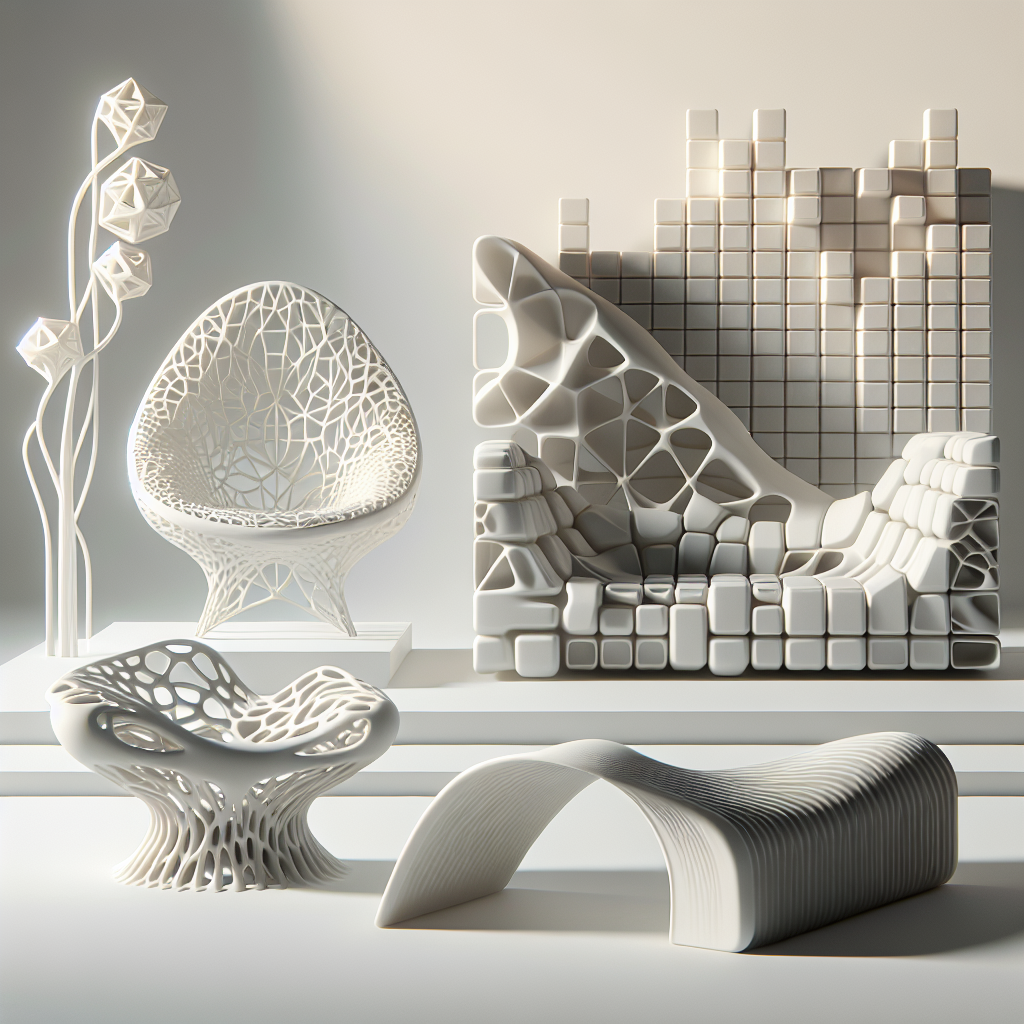The Evolution of Furniture: How 3D Printing Changed the Game
The world of furniture design has experienced a revolution, thanks to the advances in 3D printing technology. No longer constrained by traditional manufacturing methods, designers are pushing the boundaries of creativity, crafting pieces that are as much art as they are functional objects. The convergence of digital design and additive manufacturing has led to some of the most unusual and innovative furniture pieces ever imagined.
Why 3D Printing Unlocks New Creative Possibilities
Traditional furniture construction — with its dependence on wood, metal, and upholstery — imposes natural limitations on what’s possible. 3D printing, however, turns those limitations on their head. Using materials ranging from biodegradable PLA to advanced reinforced polymers, designers can now experiment with complex geometries, intricate latticework, and forms previously unthinkable. The ability to print single, seamless pieces further expands these options, leading to furniture that is both durable and visually striking.
Iconic Examples of Unusual 3D Printed Furniture
The Gaudi Chair by Joris Laarman
Inspired by the fluid lines and natural structures championed by architect Antoni Gaudí, Joris Laarman’s Gaudi Chair is a masterpiece of computational design. Utilizing algorithms that mimic the growth patterns of trees and bones, Laarman produced a chair whose organic curves and internal lattice structure would be impossible to achieve with traditional manufacturing. Printed in lightweight resin, the chair is not just a seat but a conversation piece, blurring the line between sculpture and function.
The Voxel Sofa by Karim Rashid
Karim Rashid, renowned for his futuristic aesthetic, introduced the Voxel Sofa— a striking, angular piece created entirely via 3D printing. Its pixelated, faceted surface demonstrates how additive manufacturing can give rise to new textures and forms. The robust, single-material construction is not only visually arresting but also incredibly practical, making it suitable for both indoor and outdoor use.
The Algorithmic Bench by Zaha Hadid Architects
Zaha Hadid Architects, known for their avant-garde architecture, ventured into furniture with the Algorithmic Bench. This flowing, ribbon-like form could only be realized through the layer-by-layer precision of 3D printing. The bench’s sinuous curves and seamless construction embody the futuristic vision of the studio, offering both comfort and a dramatic visual impact.
Materials: Beyond Plastics
While early 3D printed furniture primarily used plastic filaments, today’s designers are experimenting with concrete, wood composites, recycled plastics, and even metal. For example, Dutch designer Dirk Vander Kooij created the Endless chair by extruding recycled plastic into mesmerizing, candy-colored loops. Meanwhile, companies like MX3D are 3D printing entire metal structures, opening up the possibility for extremely durable and intricate furniture pieces.
Customization and Personalization: The New Frontier
Perhaps the most exciting advantage of 3D printed furniture is the ease of customization. Parametric design software allows users to tweak dimensions, forms, and textures with a few clicks, resulting in a piece tailored to personal tastes or ergonomic needs. This democratization of design, powered by 3D printing, is making bespoke furniture accessible to more people than ever before.
Pushing the Boundaries: What’s Next?
The future of 3D printed furniture is limited only by imagination. With advances in materials science and multi-material printing, we can expect to see furniture that integrates smart features, lighting, and even responsive elements that adapt to the user. As 3D printers become faster and more affordable, the line between designer and consumer will continue to blur, empowering anyone to create their own unusual and creative furniture.
Conclusion: The Art of the Possible
3D printing has unleashed a wave of innovation in furniture design, resulting in creations that defy convention and celebrate the synergy of art, science, and technology. From organic forms inspired by nature to bold geometric abstractions, these unusual and creative 3D printed furniture designs are redefining what it means to furnish a space. As the technology matures, we can look forward to even more astonishing examples that transform our environments and inspire our imaginations.

Leave a Reply